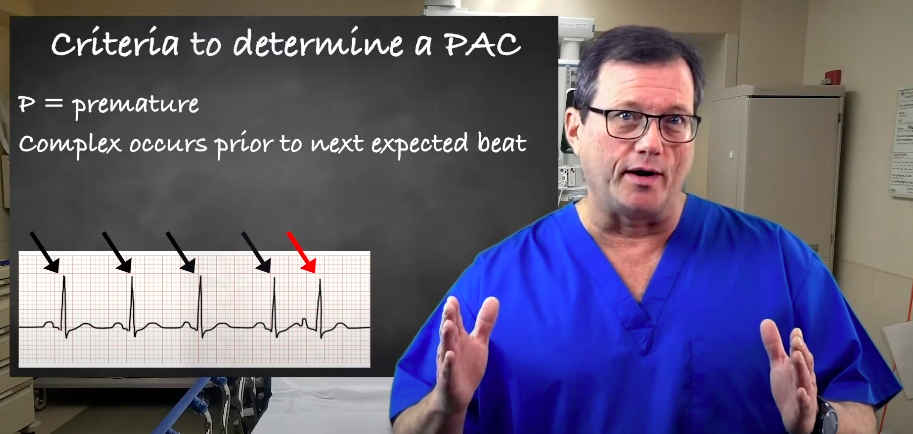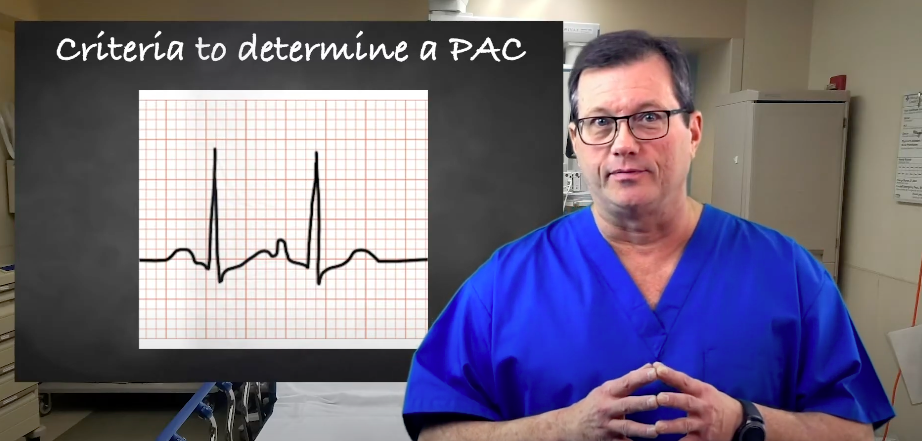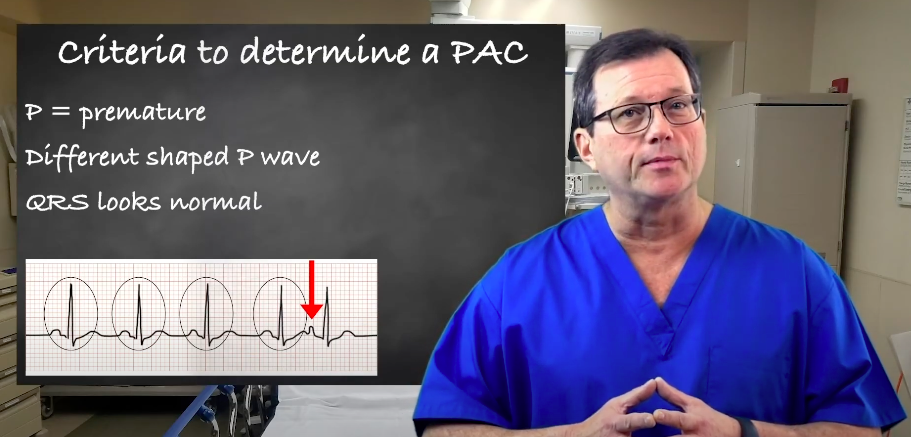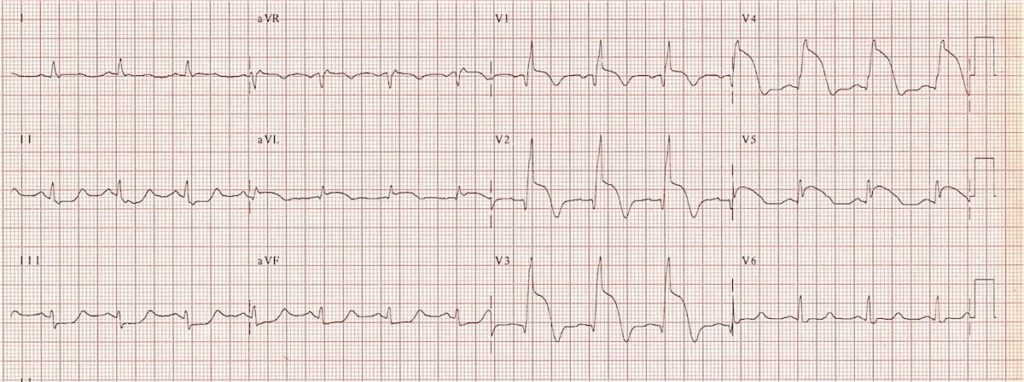Criteria for PACs (Premature Atrial Contractions)
ACLS Certification Association videos have been peer-reviewed for medical accuracy by the ACA medical review board.
Article at a Glance
- Atrial fibrillation is characterized by:
- Regularity: Very irregular
- Rate: Atrial rate > 350 bpm but difficult to measure; ventricular rate < 100 bpm
- P Wave: Unable to discern
- PR Interval: Not measurable
- QRS Complex: < 0.12 seconds
The “P” in PAC stands for premature, so the complex is going to occur prior to the next expected beat. As the R waves march out on the ECG tracing, it occurs before the next expected complex. The red arrow points to a complex that has occurred prior to the next expected beat. The “A” stands for atrial. This impulse originates somewhere in the atrial chamber but not from the sinus node. It takes a different pathway because it’s coming from a different area and creating a differently-shaped P wave. The P wave will always be upright, but it may be a little flattened. Its morphology will vary from a normal sinus P wave. The P wave is upright but looks different. The QRS complex interval should still be narrow because the PAC doesn’t impact ventricular conduction. A narrow QRS complex interval is typically less than 0.12 seconds. The QRS interval should match the other QRS complexes on the strip. The three determinants for a PACPremature Atrial Contractions
Related Video – ECG and the Cardiac Cycle Basics


Related Video – ECG Rhythm Review – Premature Atrial Complex (PAC)

Summary
A PAC comes prematurely, so the P wave occurs before the next expected complex on the ECG strip. The P wave’s morphology will differ. It will still be upright but a little flattened. The QRS complex remains the same as PAC doesn’t impact ventricular conduction.
More Free Resources to Keep You at Your Best
Editorial Note
ACLS Certification Association (ACA) uses only high-quality medical resources and peer-reviewed studies to support the facts within our articles. Explore our editorial process to learn how our content reflects clinical accuracy and the latest best practices in medicine. As an ACA Authorized Training Center, all content is reviewed for medical accuracy by the ACA Medical Review Board.

